| other Own Head Transportation
Exibits |
|
| Transportation which can be accomplished by a varied type
of models allows all of the following beautiful treasures to be included
within these museum walls. From bicycles, to motorcycles, to carriages,
to a canoe, to varied types of engines on display. |
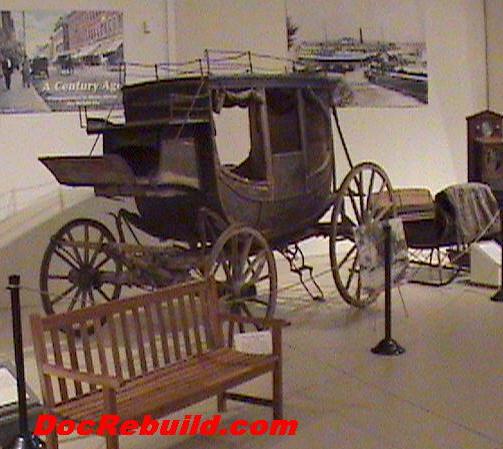 Left: This 1849
L. Downing Concord Stagecoach built in Concord, NH. was one of the
finest coaches of its era and seated 9 passengers inside. Note the graceful
wrought iron steps and hardware. It carried guests between the railroad
station and the Atlantic House in Scarborough, ME. It is not restored. Left: This 1849
L. Downing Concord Stagecoach built in Concord, NH. was one of the
finest coaches of its era and seated 9 passengers inside. Note the graceful
wrought iron steps and hardware. It carried guests between the railroad
station and the Atlantic House in Scarborough, ME. It is not restored. |
 Right: the
cab was suspended from the chassis with heavy leather straps to isolate
the harsh road from the passengers. Can you say Gunsmoke? Right: the
cab was suspended from the chassis with heavy leather straps to isolate
the harsh road from the passengers. Can you say Gunsmoke? |
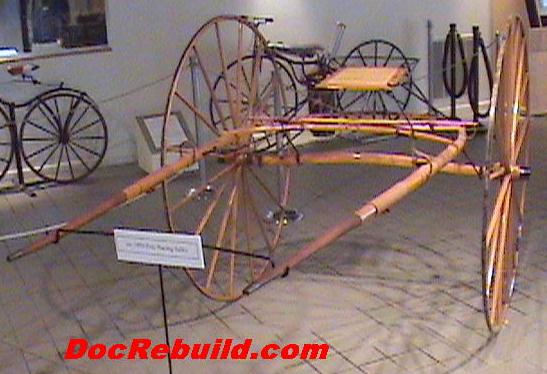 Left an 1850
circa Pray Racing Sulky used as a single passenger vehicle for speedy
transportation. or at race tracks. Left an 1850
circa Pray Racing Sulky used as a single passenger vehicle for speedy
transportation. or at race tracks. |
 A nice old
Hood Milk Wagon circa unknown, but from the phone number its
before my time. The company name Hood still lives on. A nice old
Hood Milk Wagon circa unknown, but from the phone number its
before my time. The company name Hood still lives on. |
 Left: An 1879
Harvard Highwheeler with a 51" front wheel was made in England,
and sold by Cunningham & Co., Boston, MA. I've always wondered why the
big wheel - well: "The large front-drive wheels meant greater
distance and speed per turn, allowing the rider to travel a greater distance
with each turn of the pedal." Left: An 1879
Harvard Highwheeler with a 51" front wheel was made in England,
and sold by Cunningham & Co., Boston, MA. I've always wondered why the
big wheel - well: "The large front-drive wheels meant greater
distance and speed per turn, allowing the rider to travel a greater distance
with each turn of the pedal." |
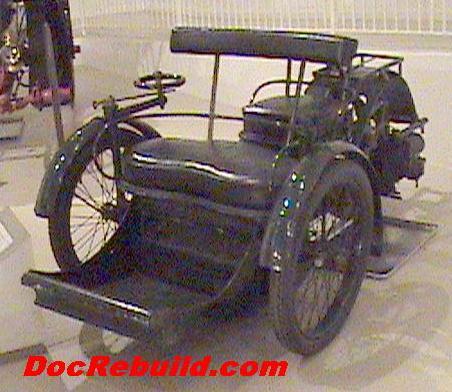 Right: An 1898
Leon Bollee Tri-Car Voiturette was a 2 passenger 3 wheeled rear
engined trike with 3 speeds: 6,12,18 MPH. A fugly 2.5 HP 650 cc powered
wheel chair comes to mind. Right: An 1898
Leon Bollee Tri-Car Voiturette was a 2 passenger 3 wheeled rear
engined trike with 3 speeds: 6,12,18 MPH. A fugly 2.5 HP 650 cc powered
wheel chair comes to mind. |
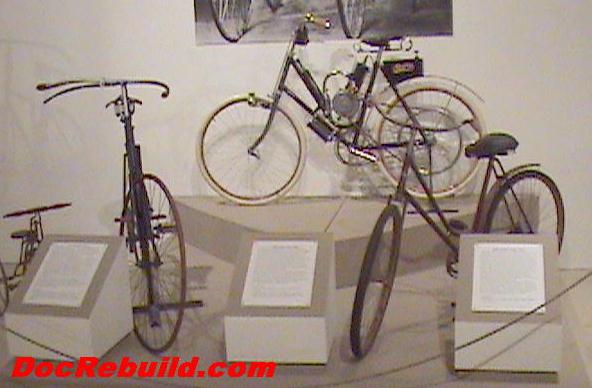 Left: 3 early
bicycles. The top center an 1897 Hartford Bicycle, built by
the Harvard Cycle Company in Hartford, CT. Note: the added gas engine. Left: 3 early
bicycles. The top center an 1897 Hartford Bicycle, built by
the Harvard Cycle Company in Hartford, CT. Note: the added gas engine. |
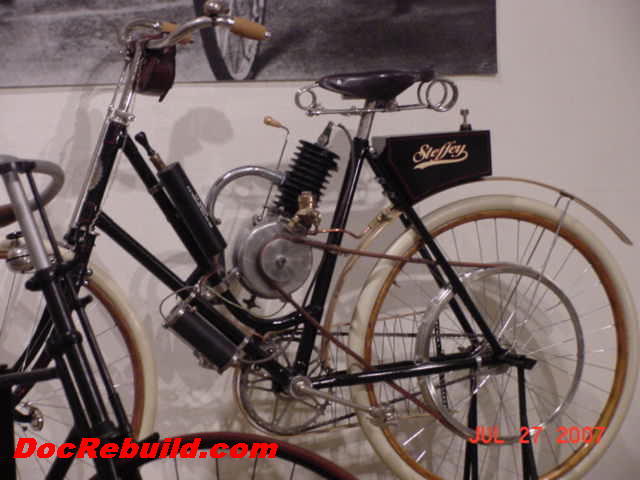 Right: A 1901
Steffey Hartford Motor Bike Steffey Mfg. Co. of Philadelphia, PA
produced the engines which was mounted to an 1897 Hartford bicycle. Note:
the large pulley and leather belt driven by the engine. Right: A 1901
Steffey Hartford Motor Bike Steffey Mfg. Co. of Philadelphia, PA
produced the engines which was mounted to an 1897 Hartford bicycle. Note:
the large pulley and leather belt driven by the engine. |
 Right: Bill
Milliken of early aviation fame with one of his earthbound creations. Right: Bill
Milliken of early aviation fame with one of his earthbound creations. |
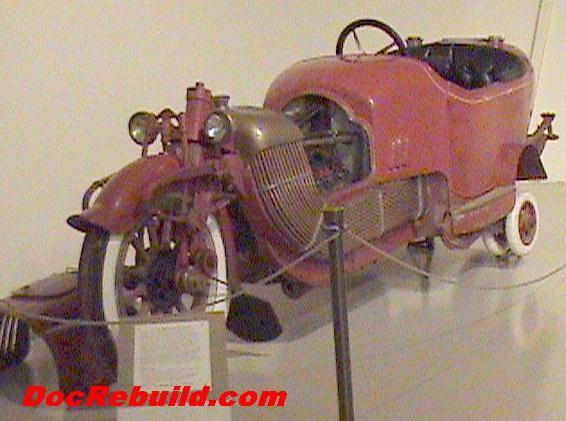 Left: the 1913
Scripps Booth Bi-Autogo is described as "the world's first
large, experimental, two-wheeled automobile" which I would call a big
fat fugly motorcycle. Left: the 1913
Scripps Booth Bi-Autogo is described as "the world's first
large, experimental, two-wheeled automobile" which I would call a big
fat fugly motorcycle. |
 Right: note
the Copper tubular radiator. It also featured a horn button on the steering
wheel, invisible door hinges and a 332 cu. in. V8 producing 45 HP. Note
the small rear out rigger wheels for maintaining balance. Gawd it
must have been nothing short of scary. Right: note
the Copper tubular radiator. It also featured a horn button on the steering
wheel, invisible door hinges and a 332 cu. in. V8 producing 45 HP. Note
the small rear out rigger wheels for maintaining balance. Gawd it
must have been nothing short of scary. |
 Left: A 1922
Royal Enfield Left: A 1922
Royal Enfield
motorcycle noted for its use of footshift lever for gear changes was made
by the Eadie Manufacturing Co. which also produced bicycles under the name
"Enfield" and "Royal" names. One cylinder air cooled,
225 cc; 2.25 HP. |
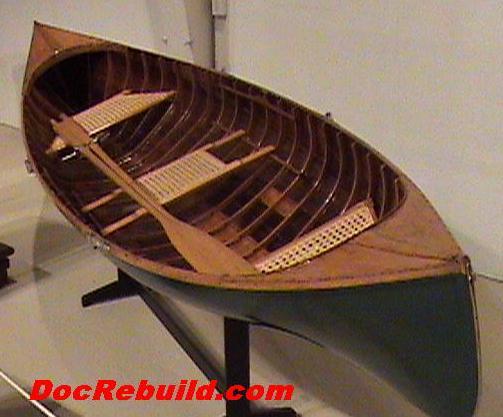 Right: you
would need a solid wood canoe with a comfortable cane seat if you lived
near the pleantiful fresh water lakes in Maine. Why do you think they call
it "Vacationland"? Right: you
would need a solid wood canoe with a comfortable cane seat if you lived
near the pleantiful fresh water lakes in Maine. Why do you think they call
it "Vacationland"? |
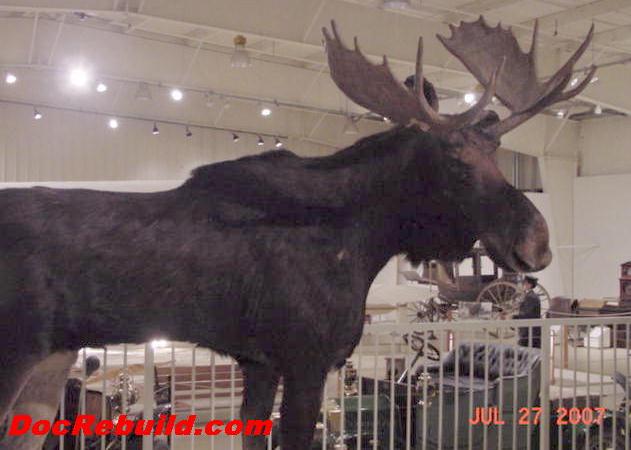 Hey, it is Maine
after all. Hey, it is Maine
after all. |
 Right: this
exhibition contains a dozen engines from steam, to gas to a jet. Right: this
exhibition contains a dozen engines from steam, to gas to a jet. |